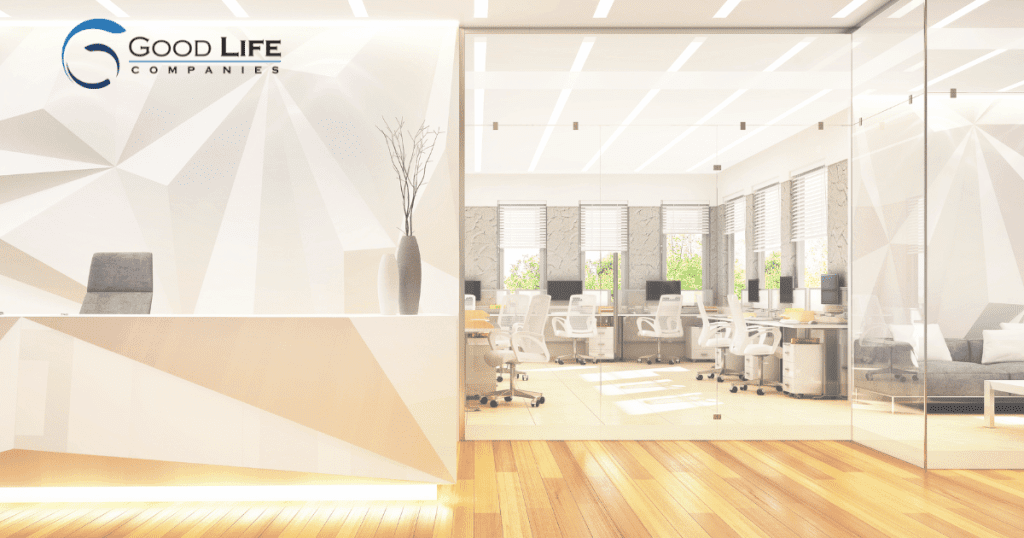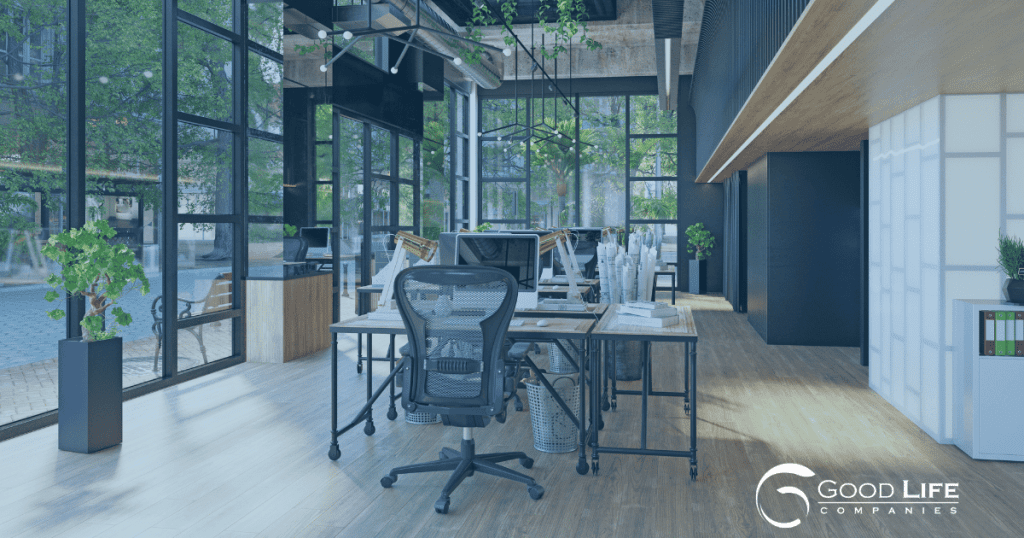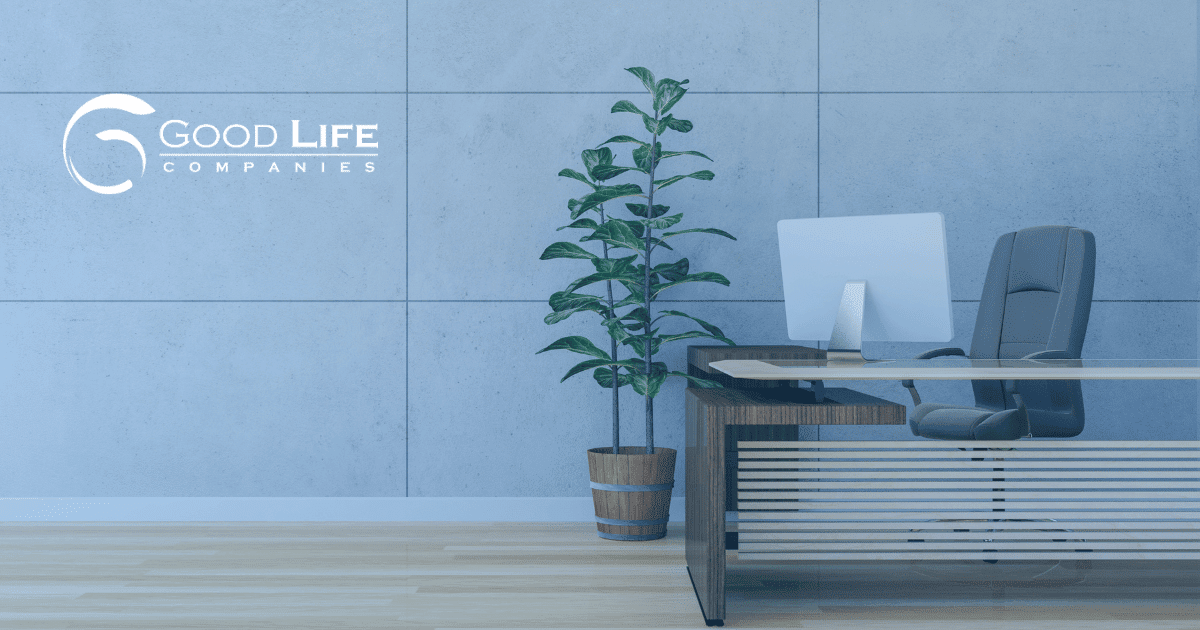For financial advisors, the office is more than just a physical space to get work done—it’s a strategic tool for building client relationships. The art of office customization plays a crucial role in setting the tone for meaningful financial advisor interactions with clients.
In this article, we’ll explore the significance of financial advisor office design and how you can craft the perfect atmosphere to enhance your clients’ experience.
An Office Space’s Impact on Client Perception
The first impression you make on a client tends to stick, and if it’s not a good one, you run the risk of cutting the relationship short. With this in mind, it’s important to align your office design with client expectations to create a positive perception of your practice.
Understanding the impact of your physical environment on client perception can set the stage for trust, respect, and confidence. From the moment clients enter their financial advisor’s office, they should be comfortable and welcomed.
When it comes to financial advisor office design, every decision you make will influence overall client comfort and trust. By understanding the psychological impact of design choices, financial advisors can create spaces that resonate with their clients.
Design elements such as furniture, layout, lighting, color schemes, and office decor can all contribute to shaping a positive client experience.
Elements of Financial Advisor Office Customization
The elements that constitute an office’s environment play a pivotal role in shaping client experiences and fostering productive interactions. Each element of an office space has nuance.
These are three of the most important elements to consider when designing your financial advisor office space:
Visual Aesthetics
Choosing a cohesive color palette and design theme for a financial advisor office design can create a harmonious, professional atmosphere. Incorporating your unique branding elements further enhances the office’s visual appeal, conveying a strong sense of identity and reliability to everyone who visits.

On the flip side, using the wrong color palette could negatively impact your client relationships. For example, overly bright colors can be distracting, while soft blues may promote focus, and soft greens are believed to have a relaxing effect. Consider the atmosphere you want to create for a new client who enters your space, then develop your aesthetic around it.
Furniture and Layout
Furniture is essential for creating a comfortable experience that encourages clients to engage in meaningful discussions. Your office should feel welcoming and familiar to the type of client you serve, and the furniture plays a significant role in that. If you serve high-net-worth clients, high-end furniture and decor will set the appropriate expectations.
When optimizing your office layout, consider the type of engagement you frequently have with your clients. Discussing financial matters often calls for a level of discretion. A larger office with ample room to host clients offers privacy and comfort. If you work in an ensemble office, a fishbowl conference room demonstrates a collaborative focus on client service.
Financial advisor practices operate with a significant amount of back office work. As you consider design and layout, it is important to take into consideration the experience you want to provide to employees and to clients.
Open floor plans can eliminate barriers and promote communication while allowing for better distribution of natural light. On the other hand, closed floor plans allow for privacy and minimize noise disruptions, promoting a more controlled working environment.
Many financial advisors, especially in smaller office spaces, opt for versatile elements like transparent dividers and movable furniture so they can adjust their arrangements to meet specific daily needs.
Lighting and Ambiance
Proper lighting is essential for a comfortable atmosphere. Incorporating thoughtful lighting elements like desk lamps and direction location lights can also contribute to creating your desired ambiance, whether it’s a warm and relaxed environment or a more formal setting.
Not only will bad lighting sabotage productivity in your office, but it could also lead to headaches, fatigue, and irritability. Nowadays, many people are moving away from harsh overhead lighting and instead prioritizing the strategic use of natural light.

In this synthesis of elements, financial advisors find the means to create a tailored space that not only reflects their professionalism but also prioritizes the comfort and engagement of those who enter their domain.
Adding in Personalized Touches
Authenticity is a key factor among consumers in choosing which businesses to work with. Incorporating personal items that reflect the financial advisor’s personality and achievements, from family photos to awards and certifications, goes a long way in enhancing the overall client experience.
Here are a few of the benefits of personalizing your financial advisor office design:
- Building trust and connection
- Creating a welcoming atmosphere
- Instilling confidence in your abilities
- Differentiating you from competitors
- Encouraging open lines of communication
Customizing for Client Demographics
Tailoring the office to appeal to the target demographic creates a powerful connection between a financial advisor and their clientele. Adding thoughtful touches that cater to the needs and preferences of the clients reinforces the financial advisor’s commitment to aligning with the client’s world. Not only that, but it helps to solidify an advisor-client relationship based on mutual understanding.
If a financial advisor primarily works with tech-savvy millennials, they might consider incorporating modern design elements into their office space like interactive displays and charging stations. If their target demographic includes families, adding an area with comfortable seating or a small play area for children can accommodate visiting parents. For clients who prioritize privacy, soundproofed meeting rooms and controlled lighting can help to curate a more confidential and focused space.
Demonstrating Tech-Savviness Through Office Design
Embracing modern technology in the office is a vital part of meeting the changing needs of your clients. From user-friendly financial planning software to efficient document-sharing platforms and secure communication channels, integrating cutting-edge technologies into your practice shows your dedication to a client-centric experience.

In addition to conveying an impression of professionalism and competence, a tech-savvy financial advisor office design sends a strong message that the advisor is invested in providing the best possible experience for their clients. If you want to show your clients that you are forward-thinking, strategic, and adaptable, it’s important to use technology to help you create a user-friendly experience.
Want a Client-Ready Financial Advisor Office on Day One?
Curating a positive client atmosphere through financial advisor office design is an art that requires careful consideration and expertise. At Good Life Companies, our real estate team can assist with everything from selecting your new space to designing an office layout that resonates with your target demographic.
Reach out to our team today to discover how we can help you create a client-ready office space that sets the stage for successful financial advisory relationships.
Frequently Asked Questions
To decorate a financial advisor’s office, prioritize cohesive visual aesthetics with a professional color palette and unique branding. Choose functional furniture, optimize the layout for a welcoming feel, and ensure proper lighting for a comfortable ambiance. Strive for a balance between professionalism and comfort to enhance client relationships and productivity.
Financial advisors should dress in professional and business-appropriate attire, such as suits or business casual outfits, to convey a polished and trustworthy image to clients.
A financial advisor stands out by demonstrating expertise, building strong client relationships, providing personalized advice, and staying updated on industry trends and market changes. Effective communication, transparency, and a commitment to client success are key differentiators.


